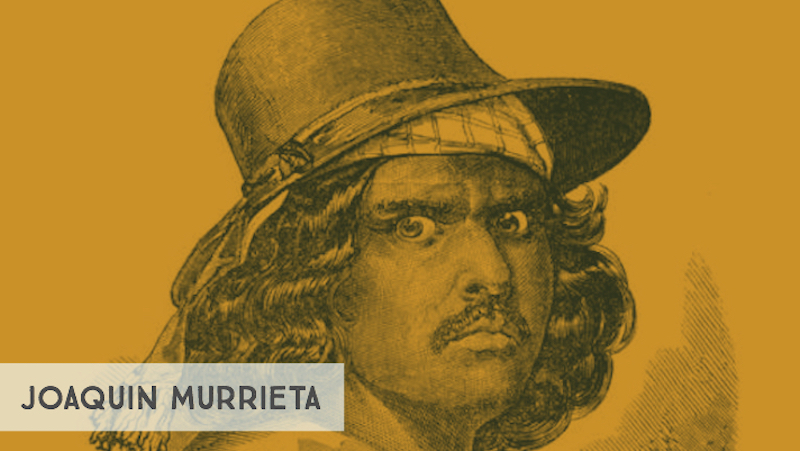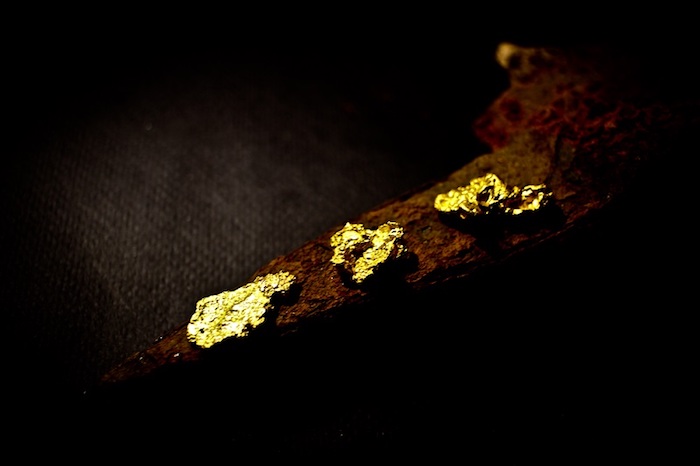
As with so many stories from the Old West, the tale of Joaquin Murrieta is a blend of truth and legend that is impossible to completely sort out. If you prefer the older histories by Hubert Howe Bancroft, which were based on the newspaper stories by John Rollin Ridge, Murrieta was a good man treated poorly and pushed toward revenge on his family’s tormenters. The legend of Zorro is supposedly based upon Murrieta. Then again you can read more recent histories that portray him as a brutal bandit and killer.
The Legend of Murrieta
Murrieta led a peaceful life until he, along with his brother, was punished falsely for stealing a mule. His accusers hung his brother in front of him, gang raped his wife, and whipped Murrieta himself. In his rage and grief, Murrieta vowed to find and kill every one of the men who had destroyed his family, and did just that.
A reward of $5000 was offered up by the State of California for whomever could bring him in dead or alive. A unsavory character by name of Harry Love found and killed Murrieta.
In 1854, one year following Murrieta’s death, John Rollin Ridge wrote the legendary tale of Murrieta as victim. It should be noted that Ridge was a newspaperman, and the news reports of that time period were particularly salacious and flowery, for the sake of a good read. The newspapers had a habit of turning outlaws into misunderstood victims.
Rumors sprang up that Murrieta had not actually been killed, but had been wounded and returned to his home, before dying and supposedly he was buried under the family home. However the floor of the home was excavated in 1986, with no remains being found.
Also Read: Gold on the Yuba – Huge Dredges Mining the River
The Much More Likely Scenario
According to church records, Murrieta was born in Sonora, a state in southern Mexico, in 1830. Murrieta sometimes went by the last name of Carillo, the name of his mother’s first husband. Murrieta married a woman by name of Rosa Feliz, and eventually the couple, his brother and three brothers-in-law struck out for California to prospect for gold.
Rosa’s brother Claudio split off from the family to prospect in the Sonora region. Joaquin and Rosa moved on to Contra Costa County, specifically Niles Canyon. Some evidence exists that points to Murrieta working near Brentwood and Oakley as a vaquero in 1850.
In 1849, Claudio Feliz was arresting for thieving the gold of one of the miners he was prospecting with. He was jailed in Stockton, but managed to escape, and he became the head of an incredibly violent band of robbers that bedeviled California. On the night of December 5, 1850, Claudio Feliz and his band of twelve, including some Anglos, attacked the John Marsh Rancho, robbing Marsh as well as his servants. A visitor by name of William Harrington made a run for it, but was shot and then stabbed with a lance for good measure.

The Digby Smith ranch, located near the town of San Jose, was attacked ten days after, and a bloodbath ensued. After subduing everyone in the house, they crushed Digby’s skull, decapitated the cook, and split the head of another settler with an axe. Before departing, they set fire to the house and burned it to the ground.
The next target was hit in February two miles from San Jose. Fortunately, the inhabitants of the ranch of Anastacio Chabollo was prepared and managed to fight off the robbers. After this failure, Claudio and his gang decided it would be safer to withdraw into the Sierra foothills, where they could rob and murder individual travelers of their gold. It is doubtful that they ever left a victim alive.
By 1851, Claudio was joined by his brother, Reyes Feliz, and by Murrieta himself. Claudio did not care about who he attacked – Blacks, Chinese, Anglos, and even Hispanics were all prey to him. Joaquin Murrieta became uncomfortable with the increasing pressure of the law, and departed for Los Angeles, where he felt he would be safer.
The end was in sight for Claudio, however. He made a serious mistake when he robbed a victim, but left him alive. The man was a Hispanic from Monterey County, where the established families had considerable power and took enforcement of the law seriously. When Claudio robbed one of his own, his own countrymen refused to protect him, and took after him in deadly earnest. It did not take long for his band of killers to be captured. Claudio himself was shot to bits and died.
After Claudio was killed, Joaquin Murrieta took the reins of what was left of the gang, with Reyes Feliz, Claudio’s brother, joining him. The Los Angeles vigilance committee seized Reyes Feliz after he was implicated in the killing of General Joshua Bean of the state militia. He was hung for the murder, and Murrieta decided it would be advantageous to return to the gold camps.
In January of 1853, Joaquin Murrieta embarked on a short but violent assault, particularly on the Chinese, with possible racial undertones, as they were frequently killed even though they carried nothing of value. In two months time, Murrieta and his gang had killed 22 men, mostly Chinese. The gang enjoyed the protection of the large population of Hispanics, but Murrieta was becoming too recognizable for him to stick around the mining camps. By March of 1853, he and his band had gone into hiding in the San Joaquin Valley.
The End of his Violent Terrors
Led by Harry Love, state rangers attempted to track down Murrieta, without success. They got a break when they managed to capture Jesus Feliz, the last of the Feliz brothers, and Jesus told Love where Murrieta’s bandits were hiding. On July 25, 1853, the rangers attacked and captured the outlaws, and in the ensuing gun battle, Joaquin Murrieta was killed. Harry Love decapitated him and preserved his head in a bottle of alcohol.
Sounds unnecessarily grisly, but given that there was no DNA or fingerprint testing available at the time, it was a reasonable way to prove the identification of the body. As he carried the bottle through the mining camps, there seemed to be little doubt that it was in fact the head of Joaquin Murrieta.
Shortly after his death a woman claiming to be Murrieta’s sister viewed the head, and said it was not her brother, as it was missing a scar that Murrieta supposedly had. The head was displayed in various locations in California, until it found its final home in San Francisco’s Golden Nugget Saloon. It was destroyed in 1906 in the great San Francisco earthquake and fire.
The final bit of the legend tells of Murrieta wandering through the gold fields, crying “Give me back my head.”
Next: Chinese Miners in the Early Gold Camps
